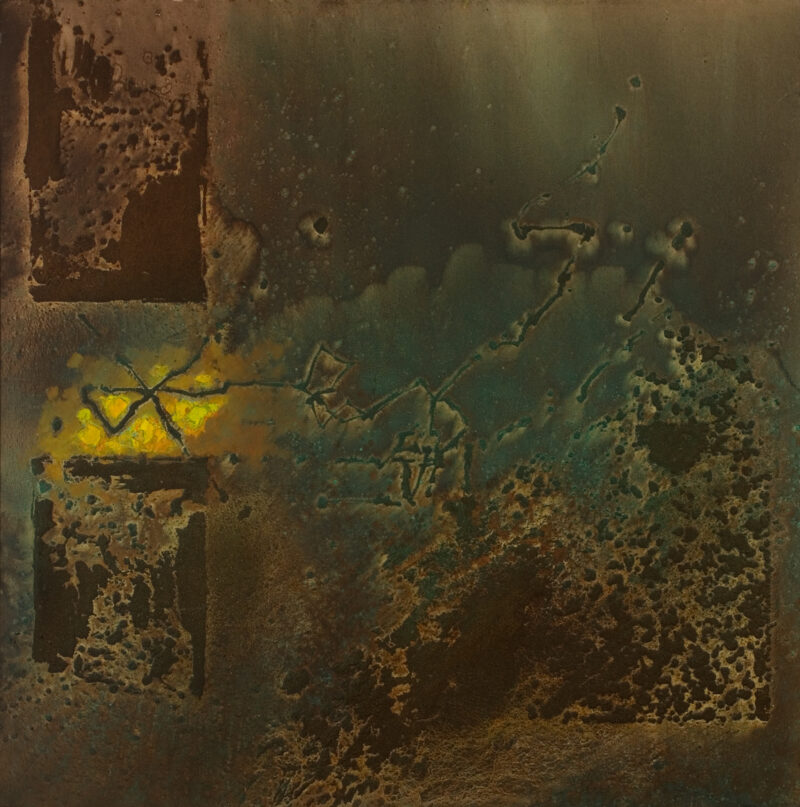
Alien Cyphers
Kepes, Gyorgy
1973–74, 1977
Artwork Information
-
Title:
Alien Cyphers
-
Artist:
Kepes, Gyorgy
-
Artist Bio:
American, 1906–2001
-
Date:
1973–74, 1977
-
Medium:
Oil and sand on canvas
-
Dimensions:
60 x 60 inches
-
Credit Line:
Wichita Art Museum, Museum purchase, Director's Discretionary Fund
-
Object Number:
1980.32
-
Display:
Not Currently on Display
About the Artwork
This stunning painting titled Alien Cyphers was executed in 1977 by Gyorgy Kepes, for more than four decades one of America’s leading contemporary artists. The composition is a kind of landscape of contrasting forms and textures — darkness and light, density and airiness, opacity and clarity — and consists of strands and varied shaped granular patches of sand mixed with dark pigment and applied to an oil painted surface. Predominantly dark tones are balanced by the greenish-yellow luminescence at the left and by a faint glow issuing from the background and creating a vaporous aura along the edges of the darker masses.
In this work there are, of course, no recognizable images from everyday experience such as are found in so-called “realistic” painting. Instead, the focus of attention is on formal elements alone, rather than on any theme. But just as a familiar object or group of objects may have meaning in a representational painting, so in an abstract painting, line, color and form — the basic formal components of all art — may have meaning, even though all representational objects have been eliminated completely. What is different then is actually the distinguishing characteristic of all so-called pure abstract painting, namely that the meaning is simply disengaged from all conventional form, leaving us with the freedom to project ourselves into the work of art where we can derive new visual experience and discover new visual pleasure. In the process, we inevitably will introduce to some extent our own value judgments. But then, we do that in relating to any painting whether it be realist or abstract. Of course, it must be kept in mind that a representational painting can indeed be as much a source of aesthetic pleasure as can an abstract painting. However, the converse is also true: an abstract painting can be the source of as much aesthetic pleasure as can a representational painting.
In the case of this particular painting by Gyorgy Kepes, the pleasure which we experience would seem to derive quite simply from the harmonious interplay of complementary opposites of being: illumination and darkness, the conscious and the unconscious, the rational and the irrational. For as we view this painting, the rigid structure of what is metaphorically identified with dense primeval matter appears to erode before our very eyes as a hidden light gently rises, producing a glowing resonance of exquisitely delicate tonal nuances and suggesting an all-embracing unity and a sense of renewal and the emergence of promising new possibilities.